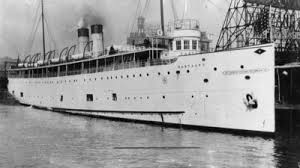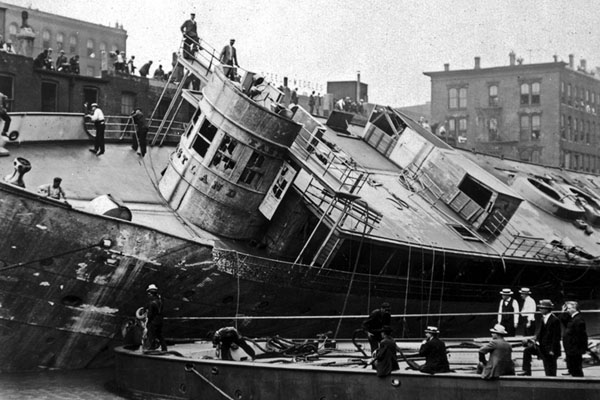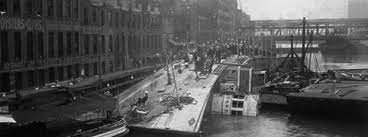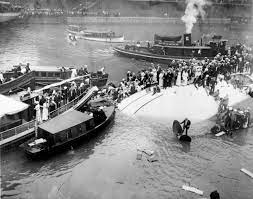In trying to avoid repeating a tragedy of titanic proportions, an avoidable mistake created a disaster!

Everyone knows the story of the Titanic, the world’s biggest ship meeting the world’s most unfriendly iceberg on a cold dark night. The resulting catastrophe went down in history as the most famous and worst accident with a record loss of lives. Many ships built after this fateful day strived to learn from the design faults and build better safer ships.
One of those, which is seemingly forgotten in history, was the Eastland.
It was originally built in Chicago in 1902 for lake excursions and underwent numerous modifications over the years to increase its original maximum capacity of 500 passengers to over 2,500. After the Titanic sank three years previously, the lifeboats onboard were increased from 6 to 11, with an additional 37 life rafts, as well as a full contingent of life jackets.
Better to be safe than sorry.
In the early hours of July 24, 1915, the ship was chartered by an electric company to ferry its employees on a picnic to Michigan City. Many of the employees were not allowed holidays, so this event for them was a momentous occasion that was probably going to be the highlight of their year.
Excited, the 2,572 workers eagerly boarded the Eastland, waving happily to friends on the dockside from the upper deck.
Experienced dock workers noticed the Eastland listing slightly away from the port, notified the crew on board who quickly added water to the ballast tanks to stabilize the vessel. It seemingly worked and nothing else was thought of it as the ship steadied itself.
But then all of a sudden it got worse, much worse, and they could only watch in horror at what unfolded next.

Completely unaware of what was happening, and the potential danger they were in, the passengers inadvertently sealed their own fate.
For some reason, hundreds of them moved as one towards the port side, easily overbalancing the Eastland, especially as it was only sitting in 6.1 meters of water and was top-heavy. Instead of correcting the imbalance as had happened before, the pitch increased sharply to one side – and kept going. Within minutes, water was pouring through the open gangways, through open portholes, pushing the ship to the point of no return in the blink of an eye.
The Eastland fully capsized right there and then next to the dock, rolling onto its side and trapping hundreds of passengers who had ventured below decks. They were caught completely by surprise. Many of them got crushed by the sudden movement of heavy furniture, many more were trapped in cabins by the rising water, many just couldn’t find the exits that were obscured in the confusion, or escape through the ones that were blocked.
The capsizing happened that quickly, and they never stood a chance.

A nearby vessel provided what help it could by allowing stranded passengers to clamber on board from the hull of the Eastland, while rescuers provided assistance to those who had escaped through portholes or ended up in the water. But the overriding question was, how could a seaworthy vessel like this capsize so easily?
The accident occurred because the Eastland had been retrofitted for years without due inspections and stability tests conducted every time it was upgraded. The metacentric height, which is the measurement of how stable a vessel is, was reduced from about four feet to four inches due to the extra safety equipment secured onboard on the topmost levels.
Basically, a high metacentric measurement increases the static stability of a vessel and allows it to compensate quickly when it starts to roll. The metacentric height on the Eastland was just too low after all the modifications it had undergone, and the extra weight of the safety equipment created a perfect scenario for a disaster to happen under the wrong circumstances.
That day 848 lives were lost. Those lives could have been saved if previous stability tests had been carried out before hundreds of life-saving jackets and life-saving rafts had been crammed onto the upper level.
After the Titanic disaster, extra safety measures on the Eastland became a priority but, in an effort to avert a disaster, one was caused.
Ironic is an understatement.

